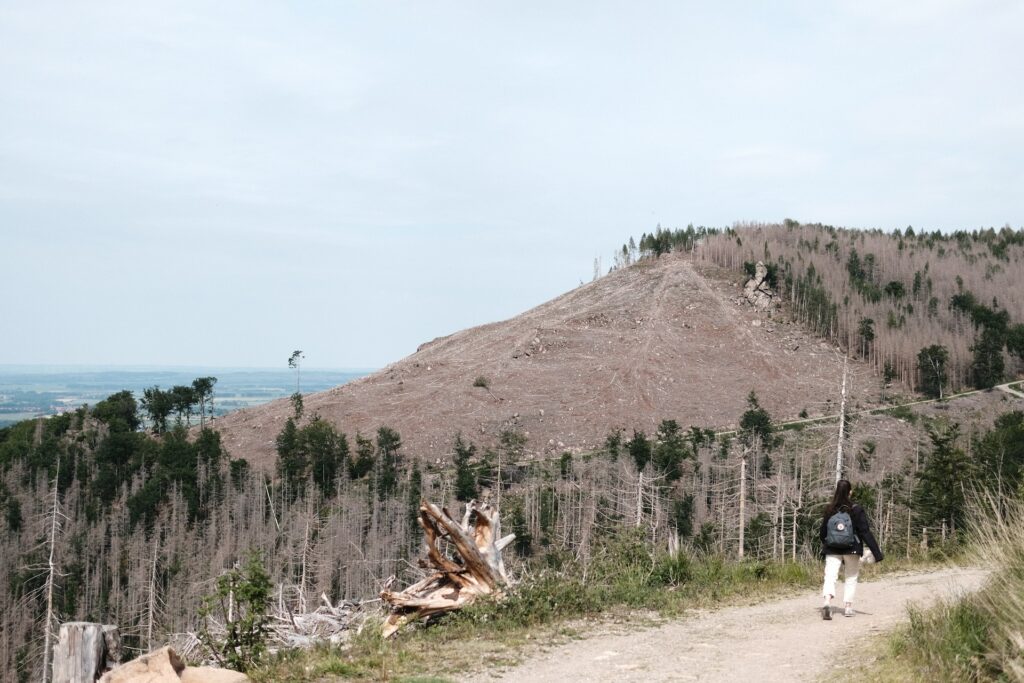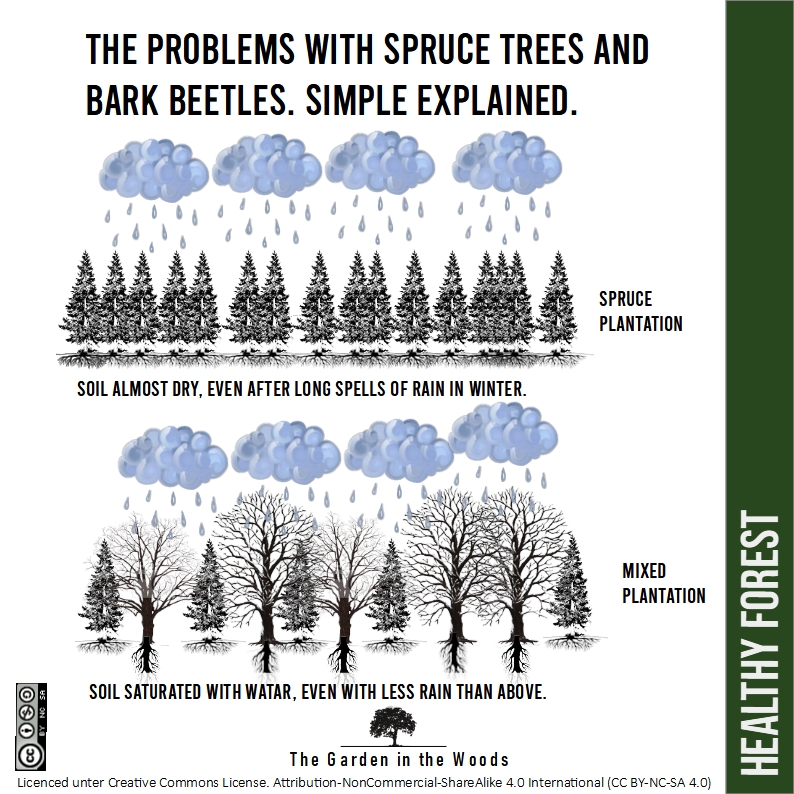Introduction:
The aftermath of a bark beetle infestation poses a considerable challenge to tree health, necessitating a comprehensive strategy for rehabilitation. This discourse seeks to explore potential avenues to ameliorate the condition of affected forests, drawing insights from on-site observations and ecological principles.
Observations and Hypotheses:

Upon meticulous examination during the process of planting hawthorn and sloe cuttings adjacent to a stand of Bruce trees, significant revelations unfolded. The soil, seemingly influenced by weeks of alternating rain and drought during the preceding summer and winter, presented a dichotomy that could have profoundly weakened the resilience of spruce trees, potentially rendering them more susceptible to bark beetle infestations.
The soil, only 2-3 centimeters beneath the surface, exhibited remarkable moisture, indicative of a saturation resulting from prolonged rainfall. However, beyond this thin layer, the soil assumed a remarkably arid state, akin to the dryness observed in the aftermath of a protracted drought. This observable aridity, extending beyond the superficial dampness, raises questions about its potential implications on the vitality of trees.
While acknowledging the absence of a formal study corroborating the impact of such soil conditions on tree health, parallels are drawn to the vulnerability of other life forms in the face of prolonged dry spells. The hypothesis posited here aligns with the notion that weakened or stressed organisms, including trees, become more susceptible to infestations by pests, such as bark beetles.
Ecological Perspectives and Mixed Planting:
Drawing parallels from experiences in vegetable gardening, where pests tend to target weakened or unhealthy plants, the hypothesis extends to the realm of forest ecology. The proposition is that the drought-induced stress on spruce trees might have created a conducive environment for bark beetles to proliferate.
To counteract such vulnerabilities, it is suggested that imitating natural diversity in forest planting practices could yield positive outcomes. Rather than planting monotonous stands of a single species, the emulation of nature’s diversity – interspersing needle-bearing and deciduous trees – could be explored. This approach, akin to the dynamic patterns found in undisturbed ecosystems, might facilitate improved water distribution and resilience among the trees.

Discussion and Future Considerations:
While acknowledging the criticisms surrounding artificial tree plantations, especially highlighted by experts such as Mr. Wohleben, it is imperative to recognize the economic realities faced by individuals dependent on forestry for their livelihoods. The proposed solution of diversifying tree species in plantations requires nuanced planning, incorporating both fast-growing and slow-growing species strategically.
Conclusion:
In conclusion, this discourse serves as a preliminary exploration of observations and hypotheses regarding the interplay between soil conditions, tree health, and bark beetle infestations. The proposition to emulate nature’s diversity in tree planting warrants further research and discussion within the scientific community. The accompanying illustration serves as a visual representation of the suggested mixed planting approach, inviting comments and insights from stakeholders in the field.
The Garden in the Woods is a project concerned for the wellbeing of soil, plants and trees and human beings. Ideas are based on observation and personal hypthesis and invite for respectful exchange.
Text, images and ideas are licenced and protected under Creative Common License, please share with link and name of the orignal author.
